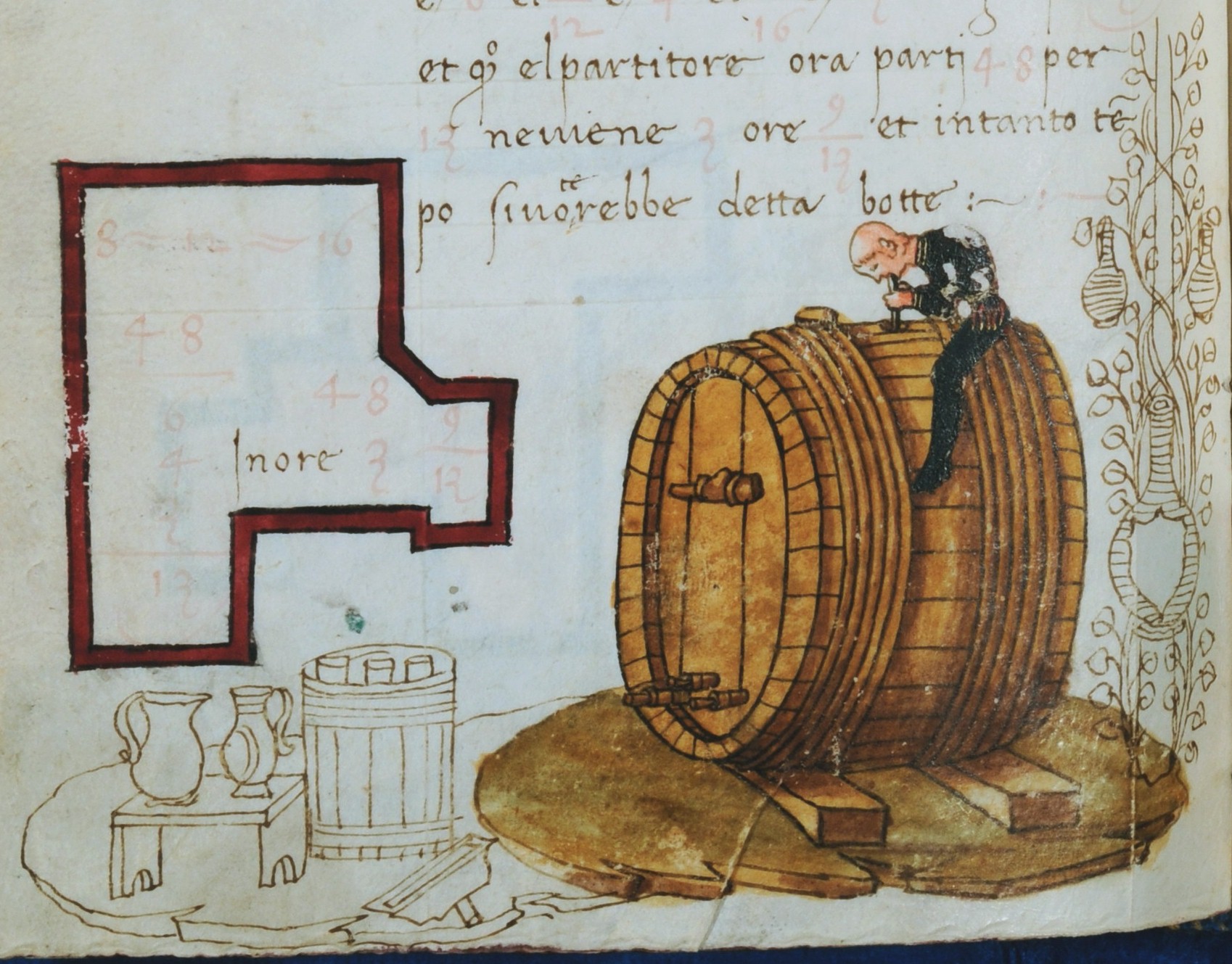- About MAA
- Membership
- MAA Publications
- Periodicals
- Blogs
- MAA Book Series
- MAA Press (an imprint of the AMS)
- MAA Notes
- MAA Reviews
- Mathematical Communication
- Information for Libraries
- Author Resources
- Advertise with MAA
- Meetings
- Competitions
- Programs
- Communities
- MAA Sections
- SIGMAA
- MAA Connect
- Students
- MAA Awards
- Awards Booklets
- Writing Awards
- Teaching Awards
- Service Awards
- Research Awards
- Lecture Awards
- Putnam Competition Individual and Team Winners
- D. E. Shaw Group AMC 8 Awards & Certificates
- Maryam Mirzakhani AMC 10 A Awards & Certificates
- Two Sigma AMC 10 B Awards & Certificates
- Jane Street AMC 12 A Awards & Certificates
- Akamai AMC 12 B Awards & Certificates
- High School Teachers
- News
You are here
'He Advanced Him 200 Lambs of Gold': The Pamiers Manuscript - A Source of the Two-Trains Problem?
As with a modern textbook, the Pamiers text contains a number of story problems that, while challenging, are of dubious practical value. They are contrived examples dressed up as real-world applications. The real purpose of these “recreational” puzzles is to further sharpen the mathematical skills of the students.
Among the examples given in the Pamiers text are several that remind us of classic problems still found in modern textbooks. Consider the following rate-and-time problem.

Figure 12. A wine cask with three taps, one bigger than the other two, appears in this drawing from an illuminated manuscript version of Filippo Calandri’s Trattato di Arithmetica, an abbaco treatise with many problems similar to those of the Pamiers manuscript. It was originally printed in Florence in 1491. (Source: Biblioteca Riccardiana (Florence, Italy), Ricc. 2669, page 108 verso. Image used by permission; further reproduction is prohibited.)
Problem 9. A cask [of wine] has three taps, the first bigger than the others, and in such a manner that with the biggest open, all the wine empties in 3 hours; and with the medium one open, it empties in 4 hours; and with the smallest open, it empties in 6 hours. I ask when all the taps are open together, in how much time will the wine empty. (Sesiano 1984, pp. 53-54)
We are given to assume that the draining speed of each tap is constant over time.
Solutions to Problem 9 by single false position and by addition of rates
In its modern form, such a problem might be phrased: “Michael can mow the entire lawn in 3 hours, Ellen in 4 hours, and Art in 6 hours….” Although the story is different, the mathematics is exactly the same! This suggests that some types of problems are old standards that have persisted for centuries, their form gradually evolving over time (see Sanford 1972). In fact, more than 200 years earlier, in Chapter 12 of Fibonacci’s Liber Abaci, we find almost this same example, but instead of “three spigots,” the vat has “four holes at the bottom” (Sigler 2002, p. 281).
The following problem, although nearly six centuries old, is highly reminiscent of a modern classic: “Two trains leave their stations in Detroit and Chicago at the same time…,” but instead of waving to each other from passing trains, the two men involved see each other on horseback.
Problem 10. Two men leave on the same day and the same hour from two cities, say for example the first leaves Béziers for Barcelona and the other goes from Barcelona to Béziers. And the one that leaves Béziers does the route in 7 days, and the other takes 9 days. I ask how much time is required before they see each other, and [if the cities are separated by 63 leagues] how far each has traveled. (Sesiano 1984, p. 54)
We are given to assume that the speeds of both men are constant over time. And if you think about it, Problem 10 is mathematically of the same type as Problem 9: instead of three taps working together to drain an entire wine cask, two men are working together to cover an entire distance of 63 leagues.
Solutions to Problem 10 by single false position, by addition of rates, and by algebra
The Treviso Arithmetic contains an almost identical problem (see Swetz 1987, pp. 158-160). The men are couriers sent between Rome and Venice, a distance of 250 Roman miles, but the travel times are still 7 and 9 days.
Randy K. Schwartz (Schoolcraft College), "'He Advanced Him 200 Lambs of Gold': The Pamiers Manuscript - A Source of the Two-Trains Problem?," Convergence (July 2012), DOI:10.4169/loci003888




